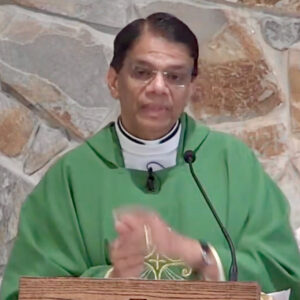In 1207, a Belgian Augustinian nun, Giuliana di Cornillon, who had just turned fifteen, had a vision of a full moon with a dark spot sullying it. Contemporary experts interpreted it thus: the full moon symbolized the Church, the dark spot was the absence of a specific feast in honor of the Body of the Eucharistic Jesus.
The following year, the same religious had an even clearer vision, but had to fight hard to get the feast instituted. She succeeded only at the diocesan level, when Robert de Thourette became bishop of Liège in 1247. In 1261, the former archdeacon of Liège, Jacques Panteléon, became Pope Urban IV. In 1264, impressed by a Eucharistic miracle that had taken place in Bolsena, near Orvieto in Italy where he was residing, he promulgated the bull Transiturus through which he instituted a new solemnity to be celebrated the Thursday after the Octave of Pentecost in honor of the Blessed Sacrament. Since Pope Urban IV died two months after having instituted the feast, the bull was never implemented, but Pope Clement V, the first Avignon Pope (1312), confirmed it later. The now traditional procession of Corpus Christi was introduced by Pope John XXII in 1316.
The ongoing Sacrament: These words of the Italian Bishops are still valid: “Many Christians live without the Eucharist. Others “make” the Eucharist but do not “make” the Church; that is, they celebrate the Eucharist in church but do not live according to the Eucharist.” The Eucharist still remains today an ongoing
Sacrament! We pray in front of the Holy Eucharist: “O Sacrament Most Holy, O Sacrament Most Divine, All Praise and All Thanksgiving, Be every Moment
Thine.” (Repeat 3 Times)
We shall make it a habit in our daily lives.
Love and prayers,
Fr. Charley
